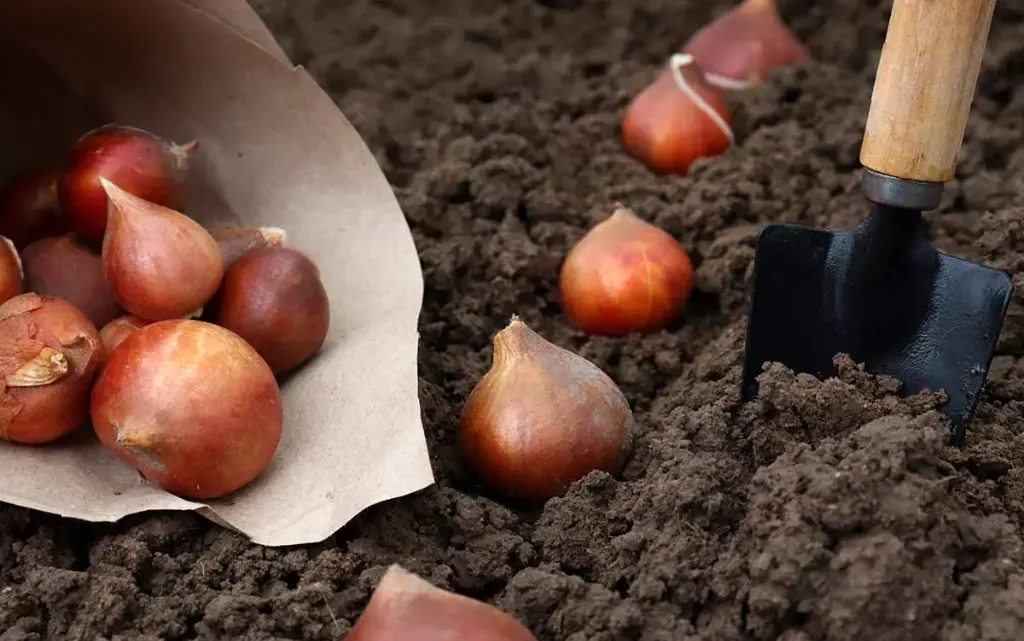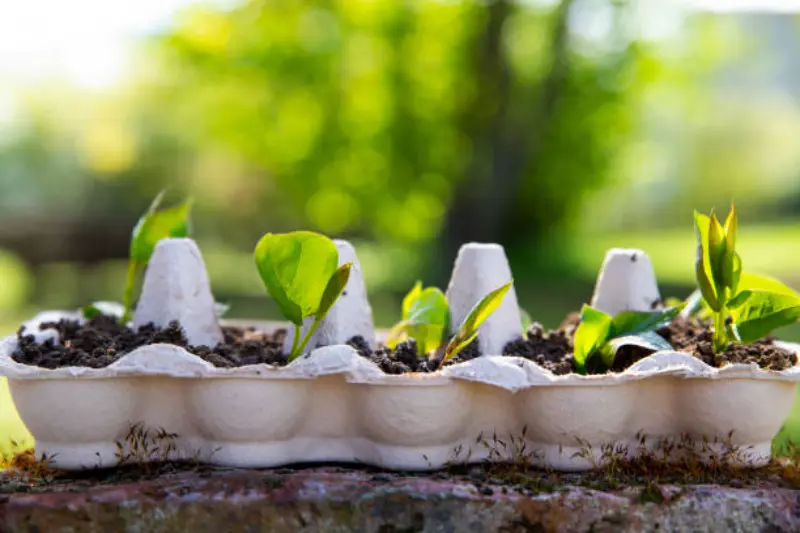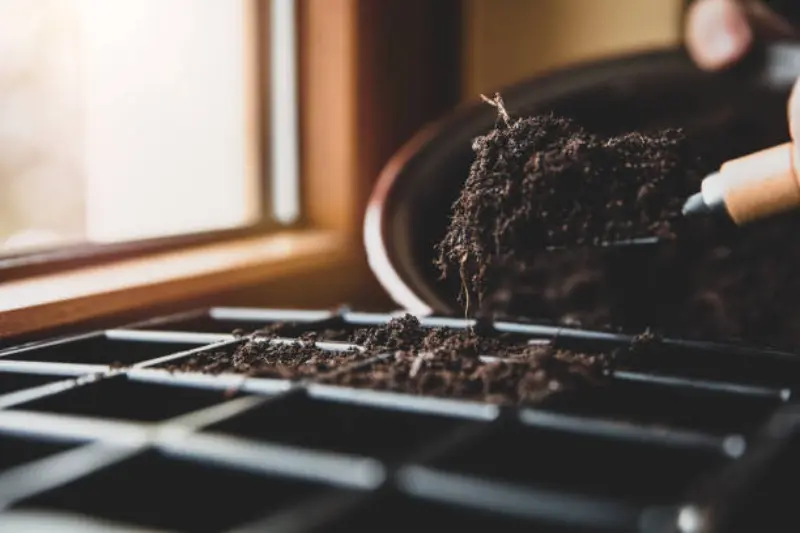
February might seem like an unlikely month to start planting, but for dedicated gardeners, it’s a crucial time to begin preparing for the growing season.
Depending on your climate zone, February offers a variety of planting opportunities, both indoors and outdoors. In this blog, we will explore what you can plant in February, providing a detailed guide on vegetables, herbs, flowers, and fruits. Whether you’re a beginner or an experienced gardener, this guide will help you make the most of this often-overlooked month.

Understanding Climate Zones
Before diving into specific plants, it’s important to understand your climate zone. The USDA Plant Hardiness Zone Map is a valuable tool that divides North America into 11 different zones based on average annual minimum winter temperatures. Knowing your zone will help you determine which plants are suitable for February planting in your area.
Key Points:
- Zone 1-2: These are the coldest zones, with minimum temperatures ranging from -60°F to -40°F.
- Zone 3-4: Minimum temperatures range from -40°F to -20°F.
- Zone 5-6: Minimum temperatures range from -20°F to 0°F.
- Zone 7-8: Minimum temperatures range from 0°F to 20°F.
- Zone 9-10: Minimum temperatures range from 20°F to 40°F.
- Zone 11: These are the warmest zones, with minimum temperatures above 40°F.
USDA Plant Hardiness Zones
| Zone | Minimum Temperature (°F) |
|---|---|
| 1 | -60 to -50 |
| 2 | -50 to -40 |
| 3 | -40 to -30 |
| 4 | -30 to -20 |
| 5 | -20 to -10 |
| 6 | -10 to 0 |
| 7 | 0 to 10 |
| 8 | 10 to 20 |
| 9 | 20 to 30 |
| 10 | 30 to 40 |
| 11 | 40 and above |
Vegetables to Plant in February
Cold Hardy Vegetables
In zones 7 and above, you can start planting cold-hardy vegetables outdoors. These vegetables can withstand light frosts and cold temperatures, making them ideal for early planting.
Spinach
- Planting Method: Direct sowing
- Tips: Spinach prefers well-drained soil and partial shade. Sow seeds 1/2 inch deep and 12 inches apart.
Peas
- Planting Method: Direct sowing
- Tips: Plant peas 1 inch deep and 2 inches apart. Provide support for climbing varieties.
Lettuce
- Planting Method: Direct sowing or transplanting
- Tips: Sow seeds 1/4 inch deep and thin seedlings to 6 inches apart. Lettuce prefers cool, moist conditions.
Kale
- Planting Method: Direct sowing or transplanting
- Tips: Plant seeds 1/2 inch deep and 18 inches apart. Kale is very frost-tolerant and can survive temperatures down to 20°F.
Indoor Seed Starting
For colder zones (1-6), February is an excellent time to start seeds indoors. This gives plants a head start and ensures they are ready to transplant when the weather warms up.
- Planting Method: Indoor seed starting
- Tips: Start seeds 6-8 weeks before the last frost date. Use seed trays and provide plenty of light.
Peppers
- Planting Method: Indoor seed starting
- Tips: Start seeds 8-10 weeks before the last frost date. Peppers require warm temperatures to germinate.
Eggplant
- Planting Method: Indoor seed starting
- Tips: Start seeds 8-10 weeks before the last frost date. Provide consistent warmth and light.
Vegetable Planting Guide for February
| Vegetable | Zone 1-2 | Zone 3-4 | Zone 5-6 | Zone 7-8 | Zone 9-10 | Planting Method |
|---|---|---|---|---|---|---|
| Spinach | No | No | No | Yes | Yes | Direct sowing |
| Peas | No | No | No | Yes | Yes | Direct sowing |
| Lettuce | No | No | No | Yes | Yes | Direct sowing |
| Kale | No | No | No | Yes | Yes | Direct sowing |
| Tomatoes | Yes | Yes | Yes | Yes | Yes | Indoor seed starting |
| Peppers | Yes | Yes | Yes | Yes | Yes | Indoor seed starting |
| Eggplant | Yes | Yes | Yes | Yes | Yes | Indoor seed starting |
Herbs to Plant in February
Herbs are a fantastic addition to any garden. Many herbs can be started indoors in February, giving them a head start before transplanting outside.
Basil
- Planting Method: Indoor seed starting
- Tips: Basil loves warmth and light. Start seeds 6-8 weeks before the last frost date.
Parsley
- Planting Method: Indoor seed starting
- Tips: Start seeds 8-10 weeks before the last frost date. Parsley can take 2-4 weeks to germinate.
Cilantro
- Planting Method: Indoor seed starting or direct sowing (zones 7 and above)
- Tips: Cilantro prefers cooler temperatures. Sow seeds 1/4 inch deep.
Chives
- Planting Method: Indoor seed starting or direct sowing (zones 7 and above)
- Tips: Chives are very hardy and can withstand cold temperatures. Sow seeds 1/4 inch deep.
Herb Planting Guide for February
| Herb | Zone 1-2 | Zone 3-4 | Zone 5-6 | Zone 7-8 | Zone 9-10 | Planting Method |
|---|---|---|---|---|---|---|
| Basil | Yes | Yes | Yes | Yes | Yes | Indoor seed starting |
| Parsley | Yes | Yes | Yes | Yes | Yes | Indoor seed starting |
| Cilantro | Yes | Yes | Yes | Yes | Yes | Indoor seed starting |
| Chives | Yes | Yes | Yes | Yes | Yes | Indoor seed starting |
Flowers to Plant in February
Flowers bring color and life to your garden. February is an excellent time to start many flower seeds indoors, ensuring vibrant blooms in the spring and summer.
Pansies
- Planting Method: Indoor seed starting or direct sowing (zones 7 and above)
- Tips: Pansies prefer cooler temperatures. Sow seeds 1/8 inch deep and keep soil moist.
Snapdragons
- Planting Method: Indoor seed starting
- Tips: Start seeds 8-10 weeks before the last frost date. Snapdragons prefer full sun and well-drained soil.
Marigolds
- Planting Method: Indoor seed starting
- Tips: Start seeds 6-8 weeks before the last frost date. Marigolds are easy to grow and deter many garden pests.
Petunias
- Planting Method: Indoor seed starting
- Tips: Start seeds 10-12 weeks before the last frost date. Petunias need plenty of light to germinate.
Flower Planting Guide for February
| Flower | Zone 1-2 | Zone 3-4 | Zone 5-6 | Zone 7-8 | Zone 9-10 | Planting Method |
|---|---|---|---|---|---|---|
| Pansies | Yes | Yes | Yes | Yes | Yes | Indoor seed starting |
| Snapdragons | Yes | Yes | Yes | Yes | Yes | Indoor seed starting |
| Marigolds | Yes | Yes | Yes | Yes | Yes | Indoor seed starting |
| Petunias | Yes | Yes | Yes | Yes | Yes | Indoor seed starting |
Fruits to Plant in February
Although February might not be the typical month for planting fruits, certain fruit trees and berries can be planted or prepared during this time.
Bare-Root Fruit Trees
- Types: Apple, Pear, Cherry, Plum
- Planting Method: Outdoor planting (zones 5 and above)
- Tips: Plant bare-root trees in well-drained soil. Ensure the roots are spread out in the planting hole.
Strawberries
- Planting Method: Outdoor planting (zones 7 and above) or indoor seed starting
- Tips: Plant strawberries in full sun and well-drained soil. Space plants 18 inches apart.
Blueberries
- Planting Method: Outdoor planting (zones 5 and above)
- Tips: Blueberries prefer acidic soil. Plant bushes 4-5 feet apart.
Fruit Planting Guide for February
| Fruit | Zone 1-2 | Zone 3-4 | Zone 5-6 | Zone 7-8 | Zone 9-10 | Planting Method |
|---|---|---|---|---|---|---|
| Bare-Root Trees | No | No | Yes | Yes | Yes | Outdoor planting |
| Strawberries | No | No | Yes | Yes | Yes | Outdoor planting |
| Blueberries | No | No | Yes | Yes | Yes | Outdoor planting |
Tips for Successful February Planting
Planting in February requires some extra care and preparation. Here are some tips to ensure your gardening efforts are successful:
- Monitor Soil Temperature: Use a soil thermometer to ensure the soil is warm enough for planting, especially for direct sowing outdoors.
- Use Cold Frames and Row Covers: These can help protect seedlings and young plants from late frosts and cold snaps.
- Start Indoors: For many plants, starting seeds indoors gives them a head start and ensures stronger plants when it’s time to transplant them outdoors.
- Choose Cold-Hardy Varieties: Select plant varieties that are known to tolerate cooler temperatures.
- Prepare the Soil: Ensure your soil is well-drained and rich in organic matter. Adding compost or aged manure can improve soil quality.
- Water Wisely: Keep soil consistently moist but not waterlogged. Overwatering can lead to root rot, especially in colder temperatures.
Preparing Seed Trays for Indoor Planting

February is a pivotal month for gardeners looking to get a jump start on the growing season. By understanding your climate zone and selecting the right plants, you can effectively use this month to plant a variety of vegetables, herbs, flowers, and fruits. Whether you are direct sowing in warmer zones or starting seeds indoors in colder zones, careful planning and preparation will set you up for a bountiful garden year. Happy planting!



